Gold prices steady, holding sharp gains in wake of soft U.S. jobs data
Webull Corporation (NYSE:BULL) presented its first-quarter 2025 earnings results on May 22, showcasing a substantial improvement in profitability driven by strong revenue growth and disciplined expense management. The company’s shares closed up 7.23% at $13.50 before retreating 2.96% in after-hours trading.
Quarterly Performance Highlights
Webull reported total revenues of $117.4 million for Q1 2025, representing a 32% increase from $88.9 million in the same period last year. More impressively, the company managed to keep adjusted operating expenses nearly flat, with just a 2.4% year-over-year increase to $88.7 million.
This combination of strong revenue growth and controlled expenses resulted in a dramatic improvement in profitability. Adjusted operating profit surged to $28.7 million (24.4% margin) from just $2.3 million (2.6% margin) a year earlier, marking a 22 percentage point improvement in operating margin.
As shown in the following chart of Webull’s key financial metrics:
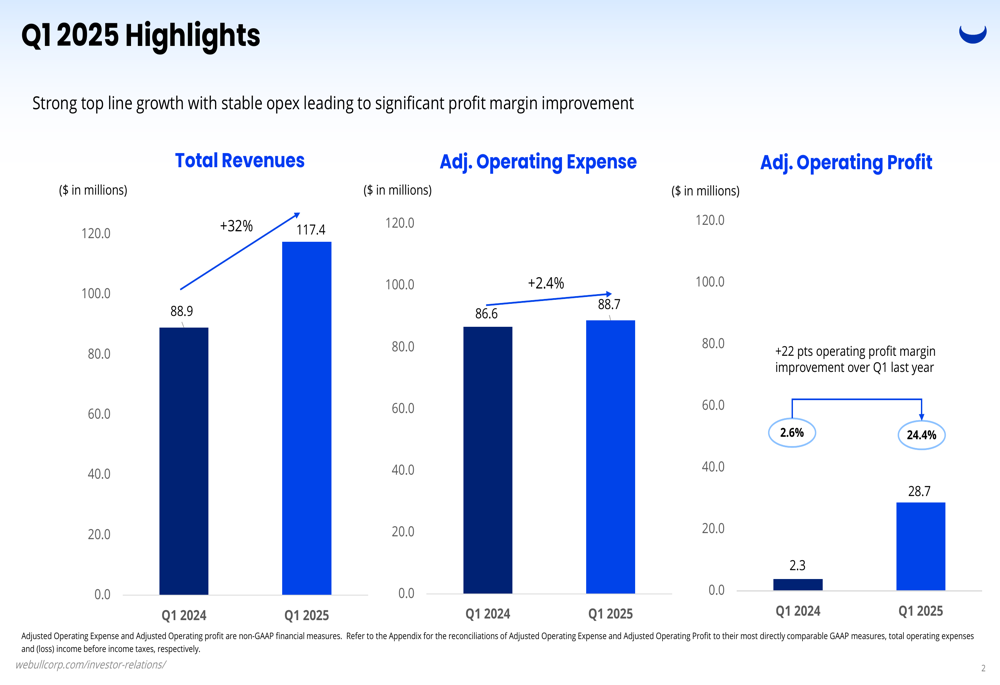
The company also achieved a significant milestone by turning GAAP profitable, with net income attributable to the company reaching $13.1 million (11.1% margin), compared to a loss of $12.4 million (-13.9% margin) in Q1 2024. This $25.5 million improvement in bottom-line results reflects the company’s successful execution of its growth strategy while maintaining cost discipline.
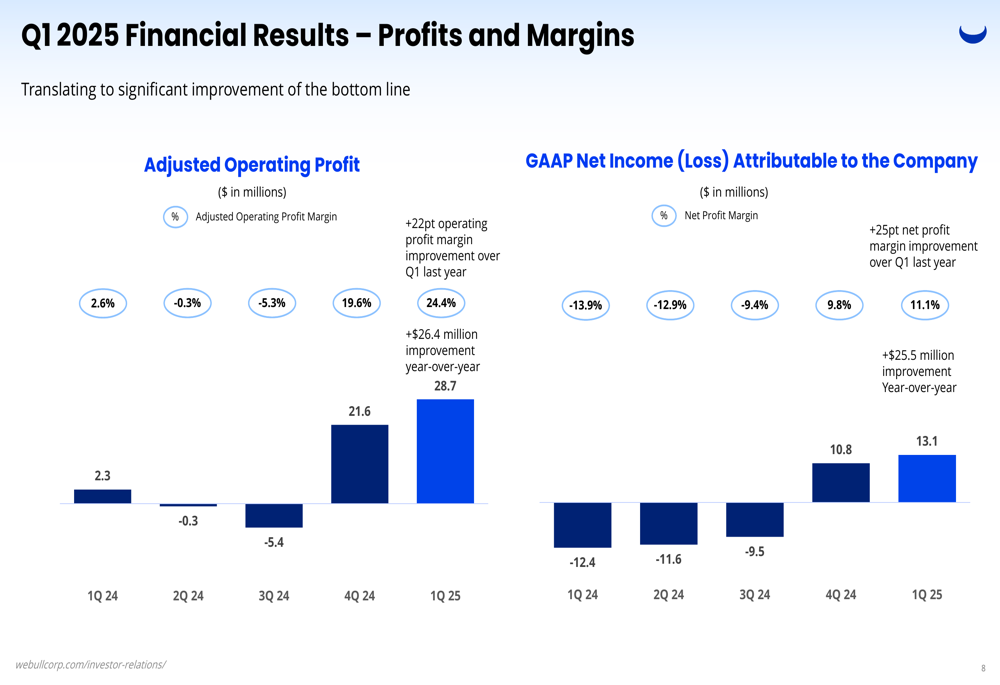
User Growth and Trading Activity
Webull continued to expand its user base, with registered users increasing 17% year-over-year to 24.1 million. Funded accounts grew 10% to 4.72 million, with quarterly retention rates consistently above 97% throughout the past year.
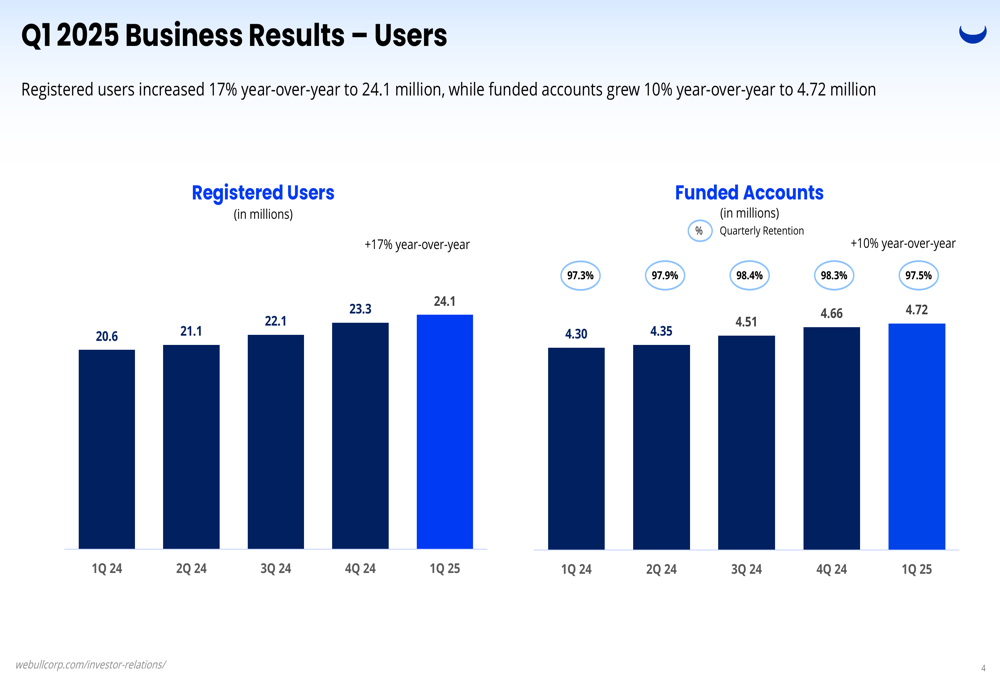
Customer assets increased 45% year-over-year to $12.6 billion, despite some sequential decline attributed to market volatility. Net deposits grew significantly from $635 million in Q1 2024 to $1,054 million in Q1 2025, with the company reporting $5.0 billion in net deposits over the trailing twelve months.
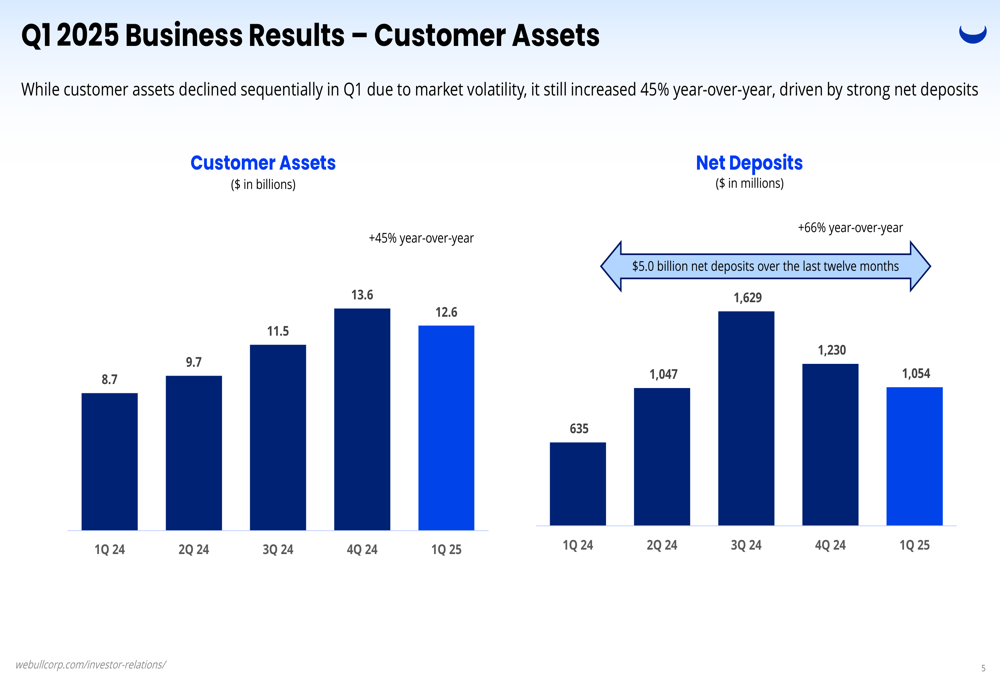
Trading activity also showed solid growth, with equity notional volume increasing 15% year-over-year to $128 billion and options contracts volume rising 8% to 121 million contracts.
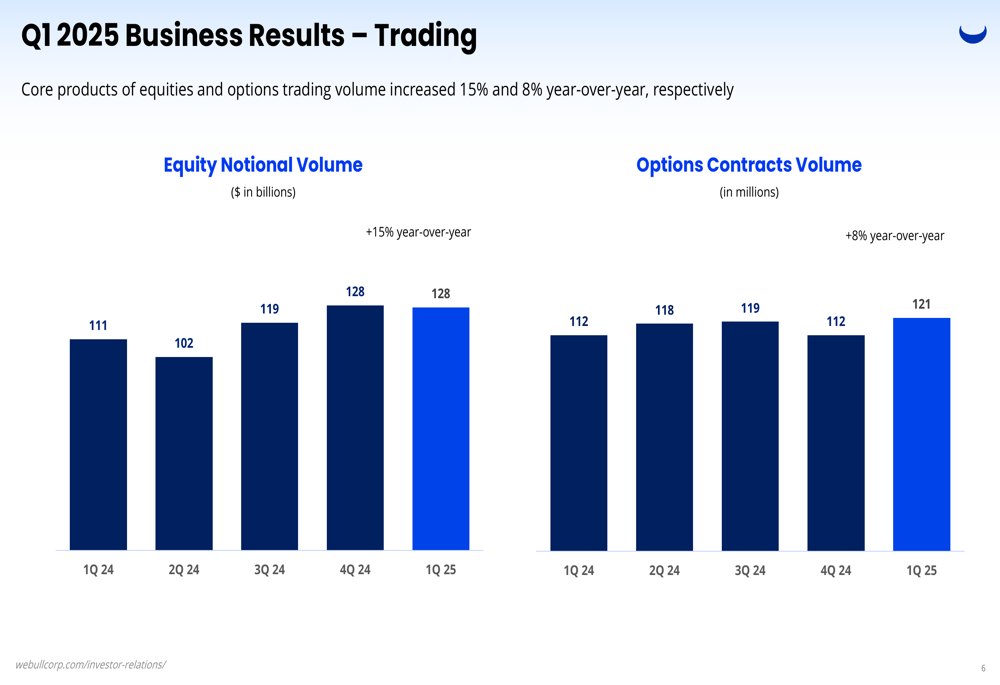
Trading Revenue and Monetization
Trading-related revenues increased over 50% year-over-year, driven by both volume growth and higher monetization. Daily Average Revenue Trades (DARTs) grew from 640,000 in Q1 2024 to 924,000 in Q1 2025.
The revenue breakdown shows significant growth across all trading categories, with equity revenue increasing from $14.0 million to $18.8 million, options revenue more than quadrupling from $2.3 million to $9.5 million, and platform and trading fees rising from $37.3 million to $53.4 million.
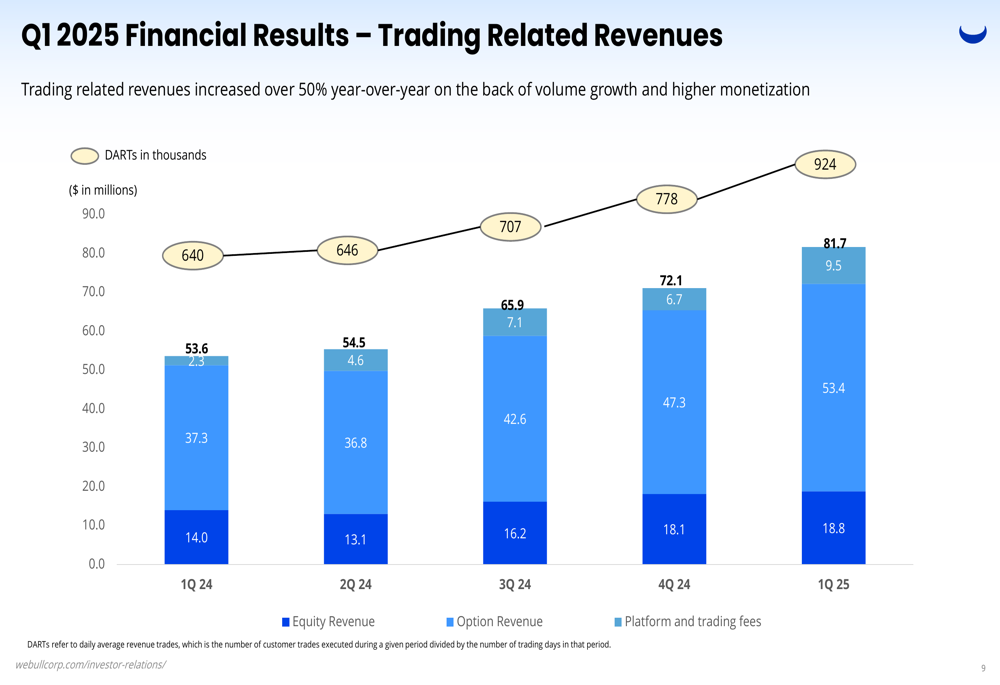
Interest-related income, however, decreased 4.3% year-over-year to $31.1 million, primarily due to lower interest on client and corporate cash. This decline was partially offset by an increase in margin financing income, which grew from $7.4 million to $8.9 million.
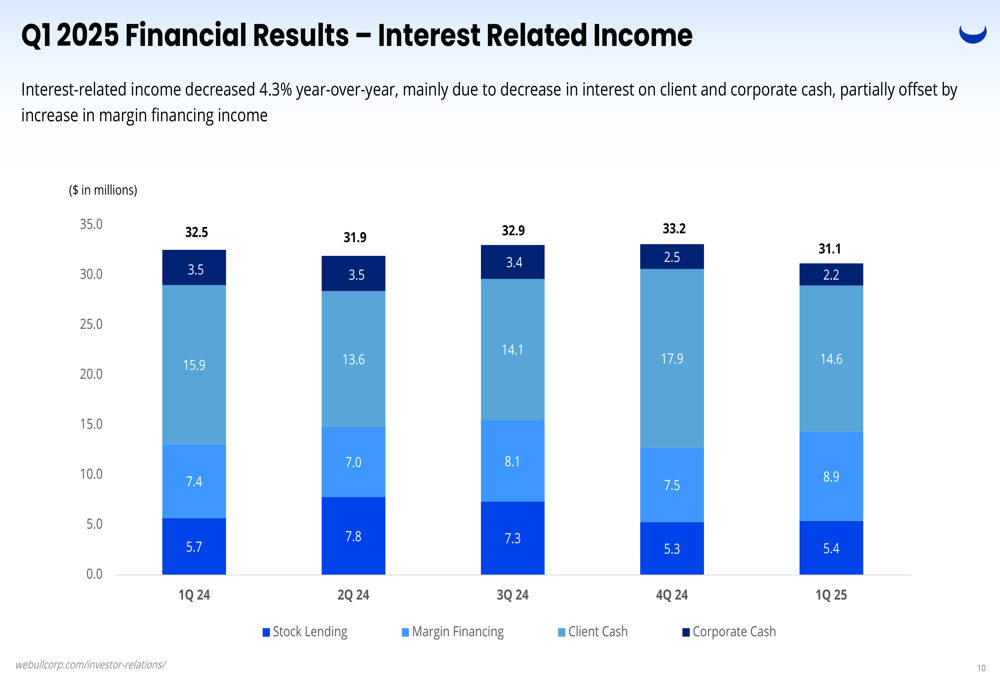
Strategic Initiatives for 2025
Webull outlined an ambitious roadmap for 2025, focusing on expanding product offerings, entering new asset classes, and growing globally. Key initiatives include:
- Q1 2025: Introduction of Webull Premium subscription service, launch of prediction contracts with Kalshi, and partnership with Blackrock (NYSE:BLK) to provide portfolio solutions to advisor clients
- Q2 2025: Launch of crypto trading in select international markets, enabling advanced option strategies internationally, introducing corporate bonds, and launching the Latin America Webull App
- Q3 2025: Re-launching crypto in the US, supporting extended trading hours for index options, and launching the Webull App in the Netherlands
- Q4 2025: Supporting mutual funds
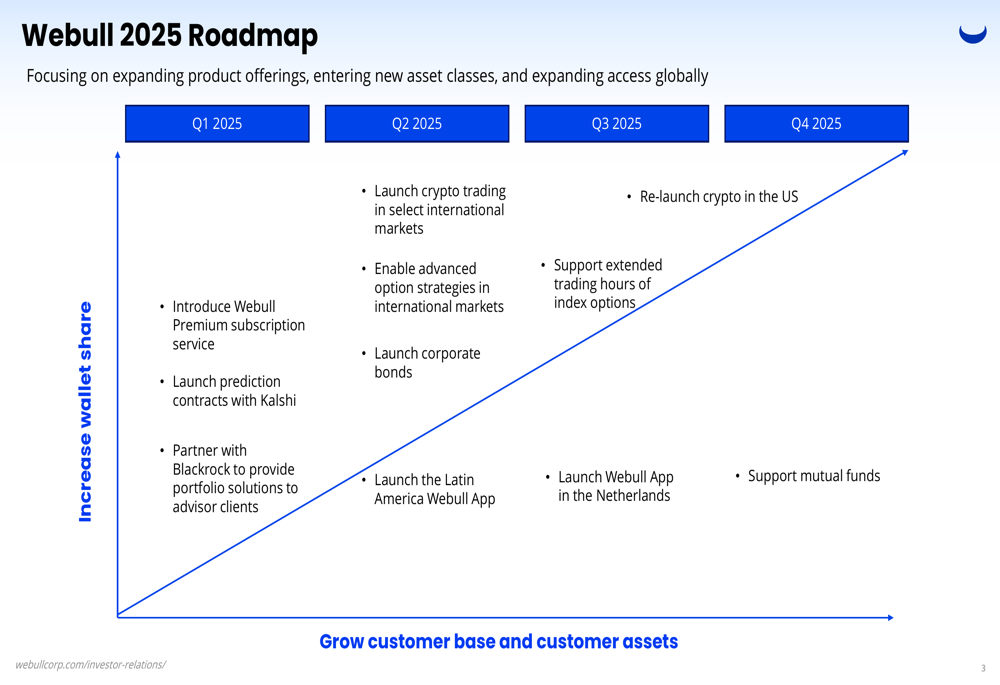
Financial Management and Outlook
Webull’s disciplined approach to expense management has been a key factor in its improved profitability. While total revenues increased 32%, adjusted operating expenses remained essentially flat year-over-year at $88.7 million, compared to $86.6 million in Q1 2024.
The company has particularly optimized its marketing expenses, which decreased from $33.5 million in Q1 2024 to $22.7 million in Q1 2025, while maintaining user growth. General and administrative expenses increased from $22.5 million to $27.4 million, while technology and development costs rose from $12.7 million to $15.4 million, reflecting investments in new product capabilities.
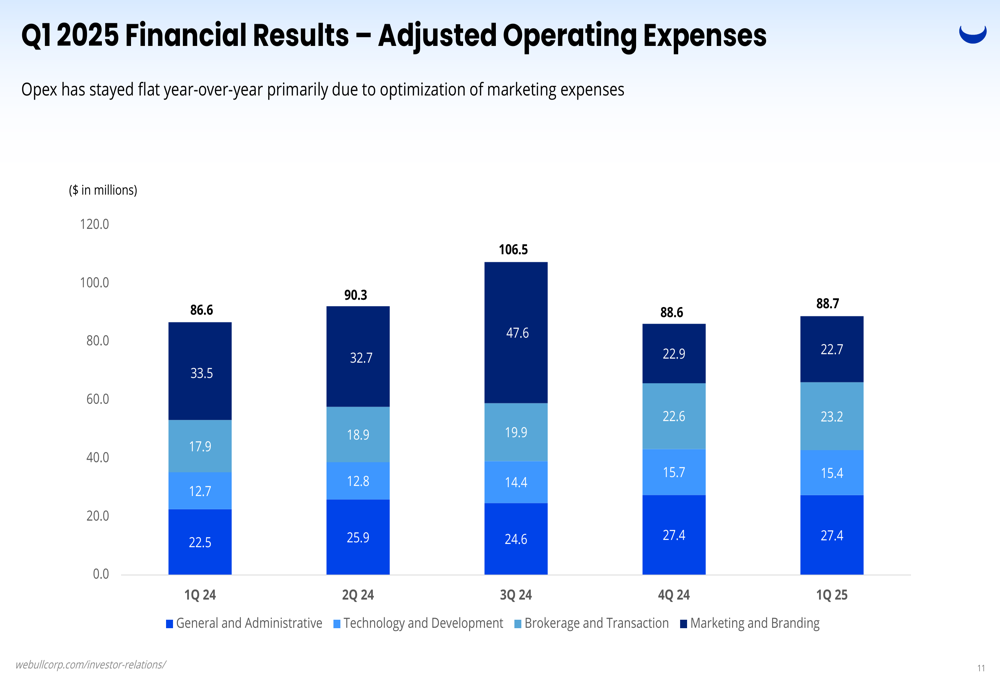
Despite the positive financial results and ambitious growth plans, Webull’s stock price remains significantly below its 52-week high of $79.56, currently trading around $13. This suggests investors may still have concerns about the company’s long-term profitability and competitive position in the increasingly crowded online brokerage space.
As Webull continues to execute on its 2025 roadmap, investors will be watching closely to see if the company can maintain its revenue growth momentum while continuing to improve profitability metrics and successfully launching new products and entering new markets.
Full presentation:
This article was generated with the support of AI and reviewed by an editor. For more information see our T&C.
